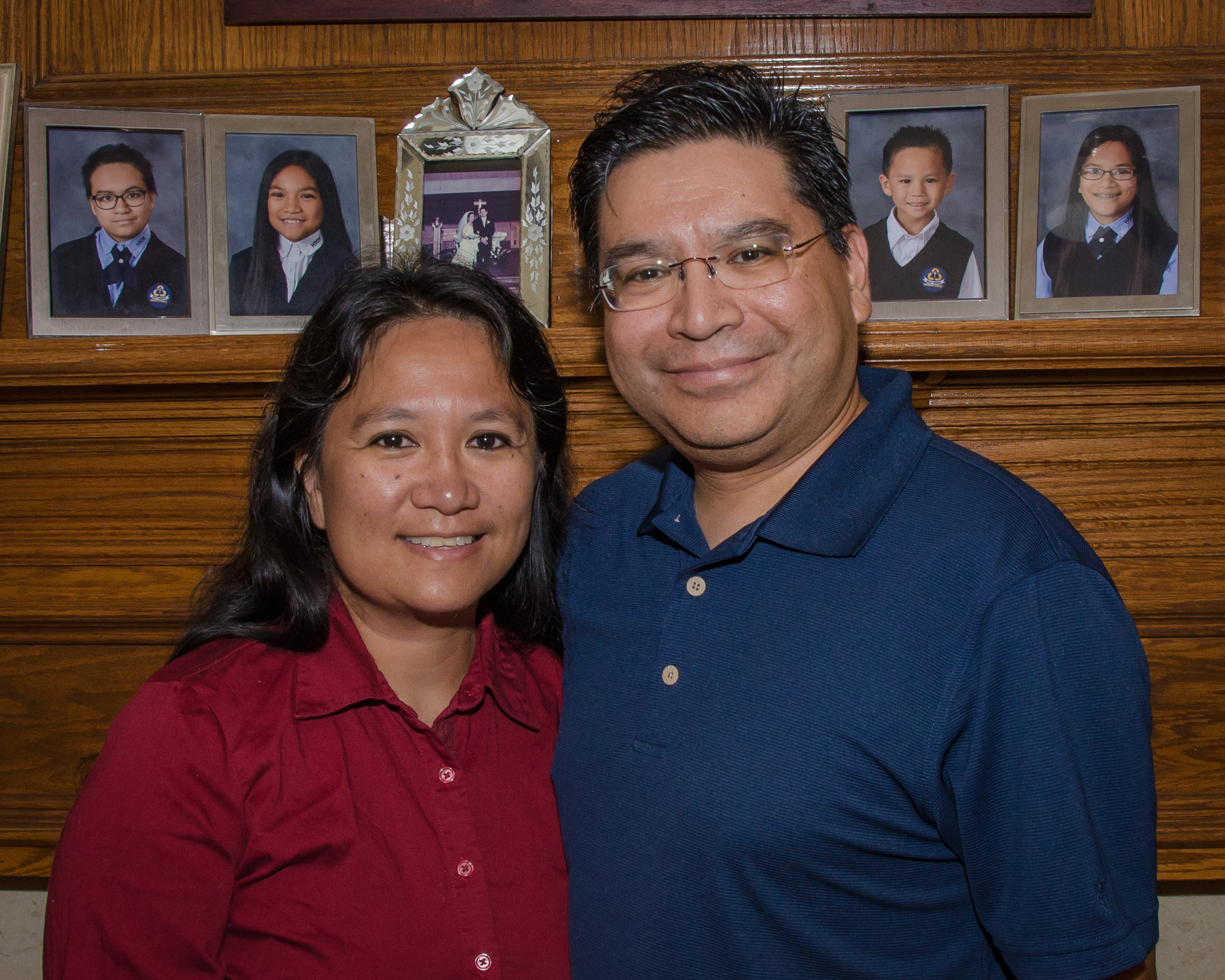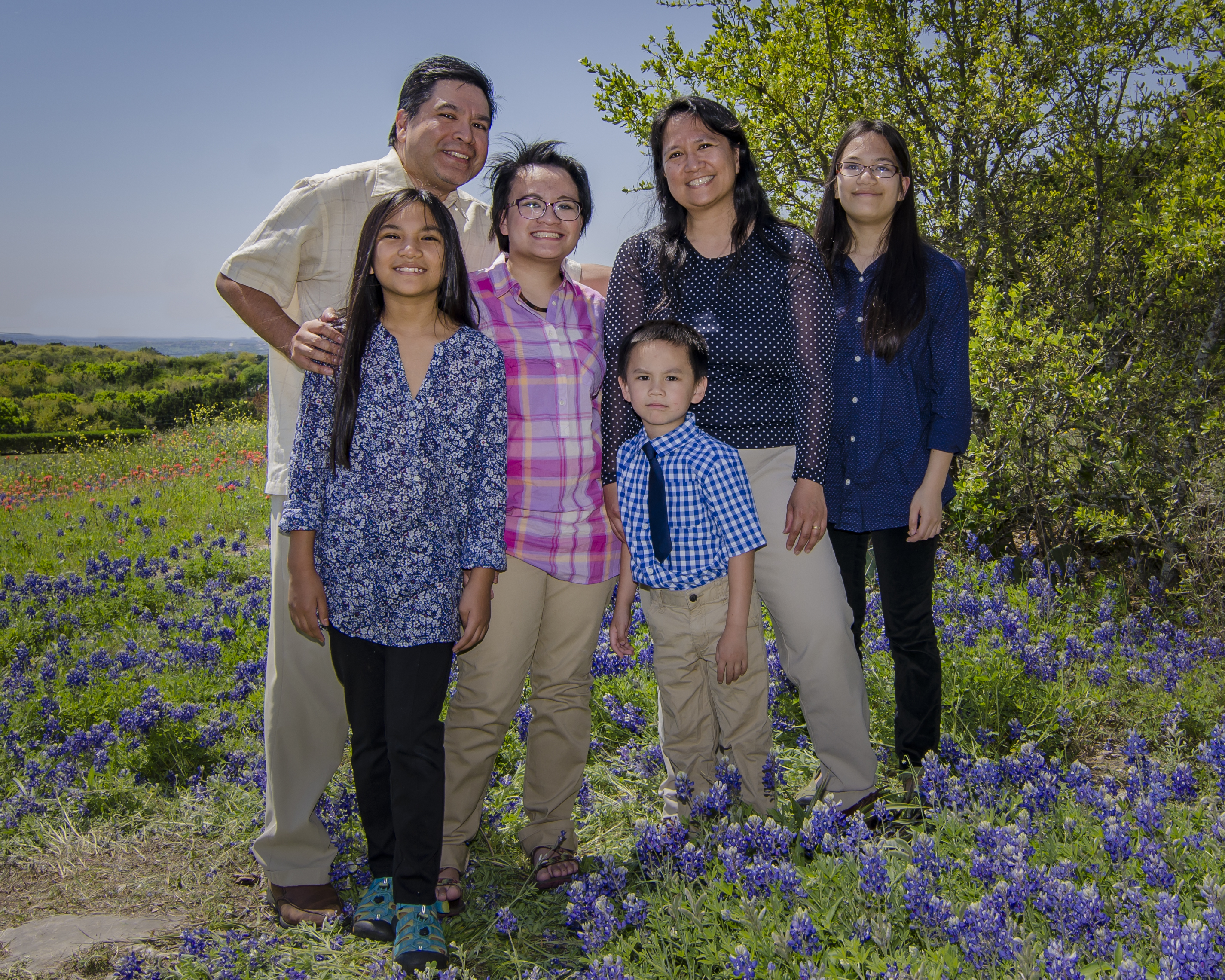July Member of the Month

Members of the Month: Melinda Balarbar, MD, and JP Santiago, MD
Husband and wife share passion and success in family medicine
posted 7.6.16
At some point we have all wondered if we can “have it all.” News pieces on work-life balance appear frequently, not just for doctors. Studies and surveys turn into television reports, trickle down into magazine articles, and are recycled into the plots of your favorite TV show’s new season. Can we have it all? Or are we set to excel in one or two areas of our lives only to eventually burn out?
Melinda Balarbar, MD, and JP Santiago, MD, figured out their work-life balance early into their medical careers. After meeting as first-year medical students at UT Southwestern, they would marry just a week after graduation. They believed that having a well-rounded life would allow them to be the best versions of themselves no matter what role they played at any given moment. Figuring out the pieces of their lives and how they could fit together would not only make them better physicians, but better spouses, parents, and community leaders as well.
How would you define the mission of your practice?
As family medicine physicians, we specialize in the lives of our patients. We always strive to make sure we look at our patients’ health concerns through a wide-angle lens that encompasses not just disease mechanisms and treatments but also in the context of their life circumstances and any barriers to health that may exist that compromise our treatment plans.
There was a lecture we both attended at the American Academy of Family Physicians FMX in Denver this past October in which the lecturer said that the single biggest determinant of whether acute lower back pain progresses to chronic lower back pain is job satisfaction. We think a lot of us in family medicine would consider that and not be surprised.
It’s just one of many examples of how other aspects of our patients’ lives can have significant ramifications on their health. How many patients are getting screened for depression after having a myocardial infarction given the increased risk of a second MI with coexisting depression? As family physicians, these are the areas that lie outside the traditional realms of medicine that we’re better placed to assess and discuss with our patients than their specialists.
What are the ups and downs of working with your spouse?
Having gone through medical school together, getting married just a week after graduation, and then going through residency together — where we were both the chief residents — the norm for us professionally was to be together and work together. We didn’t set out initially to be in private practice together but the twists and turns of life led us to be in the same private practice group.
Many of our longtime patients are comfortable seeing either one of us. When one of us was on maternity or paternity leave, we would see each other’s patients. We sometimes joke with our patients that having one of us as your primary care physician gets you a second opinion free of charge as we’ll routinely seek each other’s advice and guidance on challenging situations. The level of mutual support and knowing exactly what the other one is dealing with has been wonderful. It’s hard for us to see any downside to this arrangement because we truly enjoy working together.

How do you spend your free time?
We’re fortunate to have a lot shared interests and hobbies like photography and hiking on top of being involved with the diverse activities of our four children. With 14-year old twin daughters, an 11-year old daughter, and a 5-year old son, there’s no shortage of things to do as well as no shortage of “cool things” we want to expose them to as they get older like history, music, art, science, and sports. You could say we want them to be as well-rounded as we try to be ourselves! Melinda has done triathlons and a marathon and has always enjoyed the challenges of athletic endeavors while JP is a published aviation artist and writes for several aviation blogs. Perhaps one day he’ll finally finish getting his private pilot’s license!
Where is your favorite getaway?
Any place with beautiful topography! Canyons, mountains, you name it, it’s probably on our list of past or future vacation spots. And if it’s got untouched wilderness, even better. There’s an almost spiritual experience we have when we’re in a beautiful mountain wilderness area hiking that’s mentally and emotionally refreshing. Last year we took the kids up to the Canadian Rockies to Banff, Jasper, and Yoho National Parks. We watched the sun rise over the peaks of the Continental Divide at Moraine Lake in Banff and to sit there in the quiet of nature, to be surrounded by scenery that’s millions of years old reminds us that our time on earth is so very tiny and insignificant by comparison. Why clutter our lives with stress and minute inconveniences that at the end of the day are really just a waste of our time and resources?
If you weren’t a physician, what would you be doing with your career right now?
We both would probably be doing something in education, which really isn’t all that different from what we do in medicine when educating our patients. Melinda would likely have done athletic coaching and perhaps even music education while JP would probably be teaching history and writing books on history. In fact, these are the very areas we will likely go into when we retire from private practice!
It is important for me to be a member of AAFP and TAFP because:
Medicine is changing in so many ways and in so many directions that it’s easy to get bogged down in a number of ways that can interfere with the loyalty and obligations to our patients. Primary care is the foundation of modern medicine and as family medicine physicians, we’re probably best placed to advocate for our patients and their families. That’s what we do every day in our practices.
We go to bat for them whether we’re slogging through pre-auths, dealing with mail-order pharmacies, getting them hooked up with specialists, battling their insurance companies on top of getting them healthier, physically, mentally, or emotionally. Being a member of AAFP and TAFP, you realize that you don’t fight those battles alongside your patients alone and unrecognized. There are legions of other family medicine physicians that know what you’re going through and there are some physicians with the skill sets to go to bat for all of us in family medicine. Just like we’re best placed to advocate for our patients of any age, we’re also best placed to advocate for each other because we have that broad scope of experience. AAFP and TAFP give us a forum and a unified voice to do what is right in medicine.
What advice would you offer to medical students selecting their specialty?
Choose a specialty or career track that fits in with your other life goals! We have treated fellow physicians as patients over the years and we both strongly believe that a physician’s best defense against burnout is to not be one dimensional. Don’t just be a physician! Be other things and enjoy those other things — music, art, writing, or sports — whatever it is, be multi-dimensional and have multiple sources of validation in your life besides medicine. If you’re well-rounded with a diverse set of interests, it will make you a better physician because you’ll have broadened your horizons in many different directions, which will give you different perspectives in life.
Regardless of what specialty you choose, being able to see things from different perspectives based on a variety of experiences will make you a better physician, not just better equipped to care for your patients but also better able to care for yourself physically, mentally, and emotionally. Medicine is a challenging career every step of the way and it doesn’t ever let up or cut you slack. No one is going to make all the pieces of your life fit together for you. Our experience in primary care is that it’s hard to make all those varied parts of life fit together after the fact. Figure out what your life goals are early on and figure out the context each piece should play in your life.
TAFP’s Member of the Month program highlights Texas family physicians in TAFP News Now and on the TAFP website. We feature a biography and a Q&A with a different TAFP member each month and his or her unique approach to family medicine. If you know an outstanding family physician colleague who you think should be featured as a Member of the Month or if you’d like to tell your own story, nominate yourself or your colleague by contacting TAFP by email at tafp@tafp.org or by phone at (512) 329-8666. View past Members of the Month here.